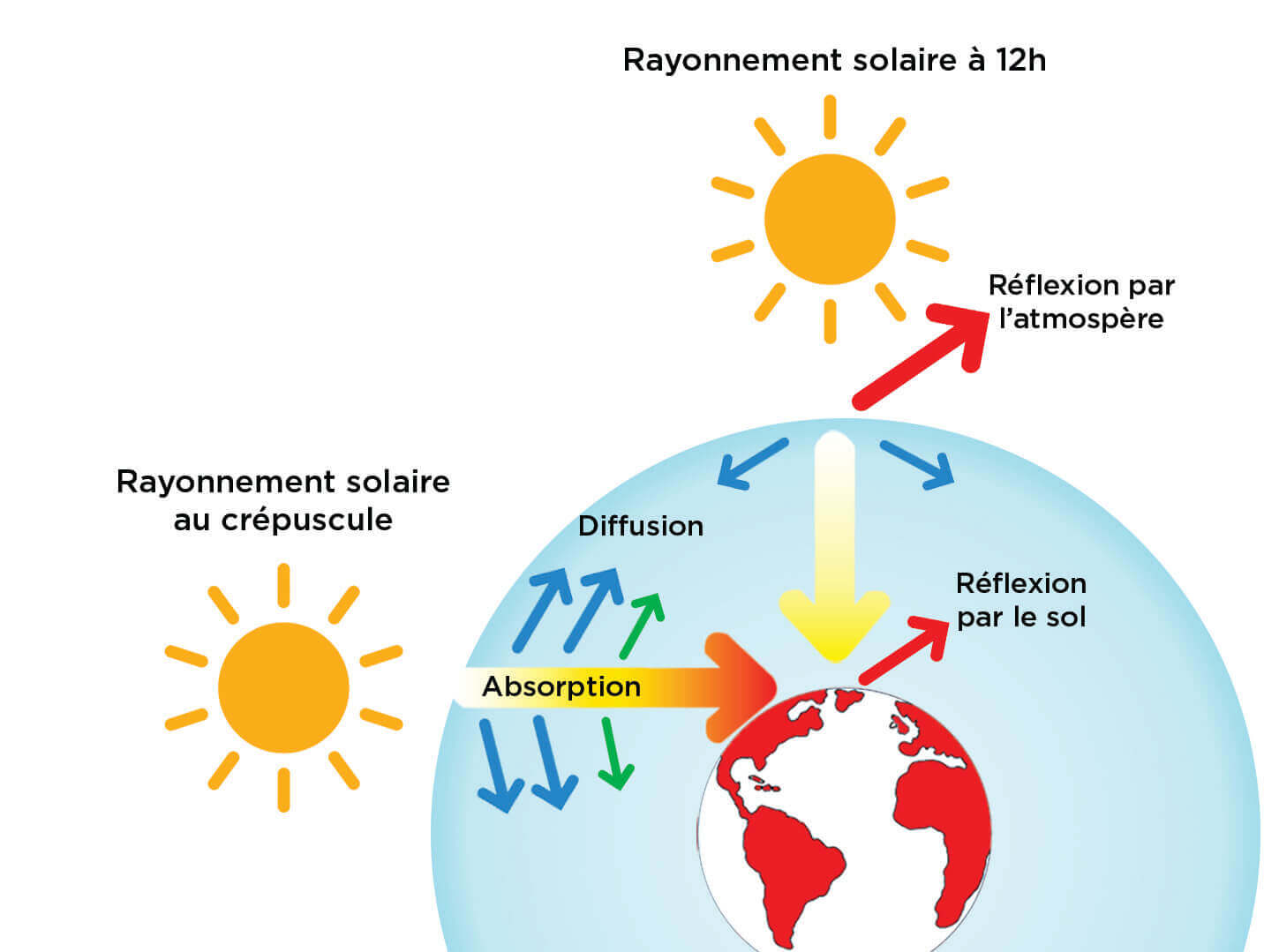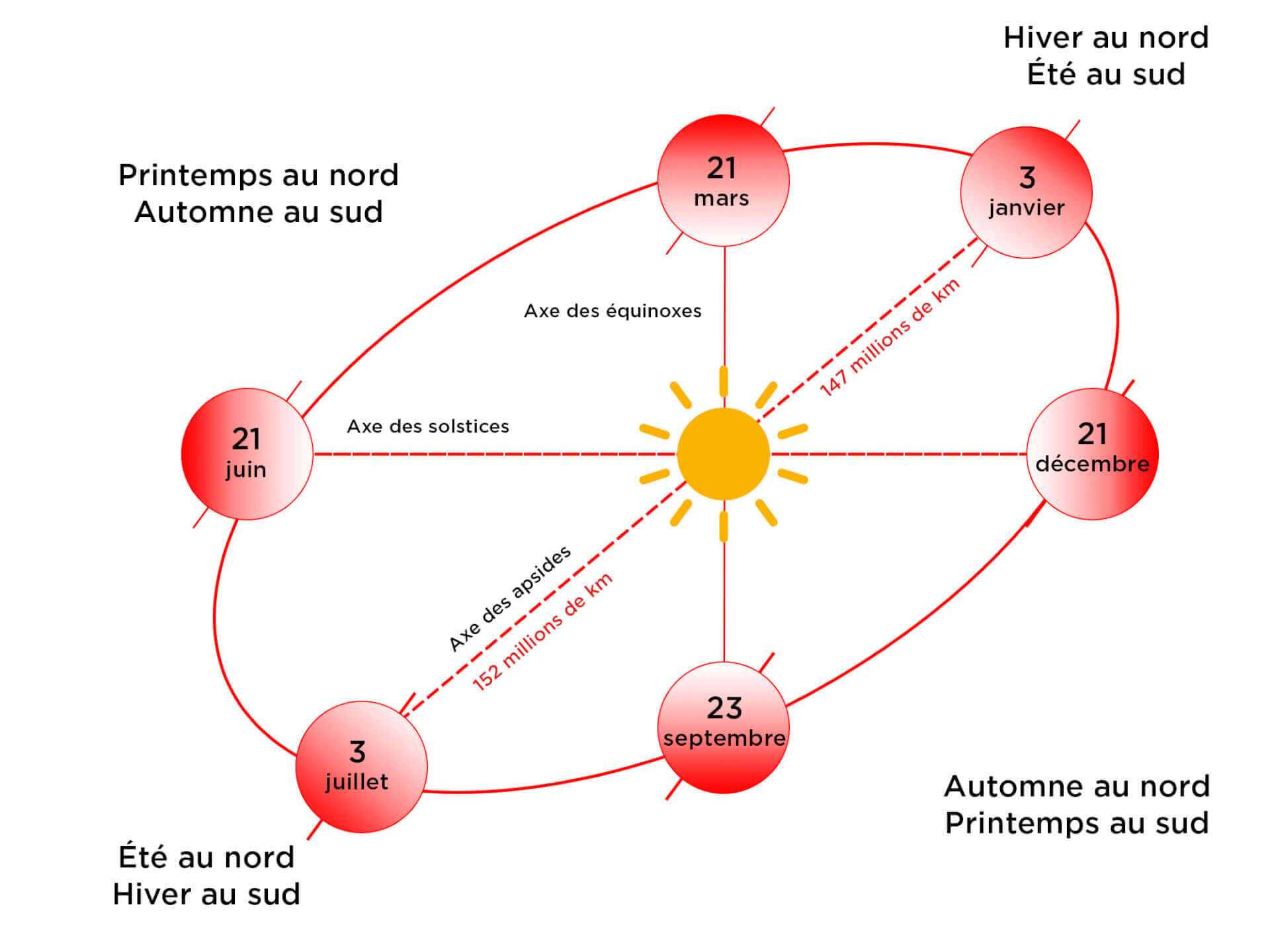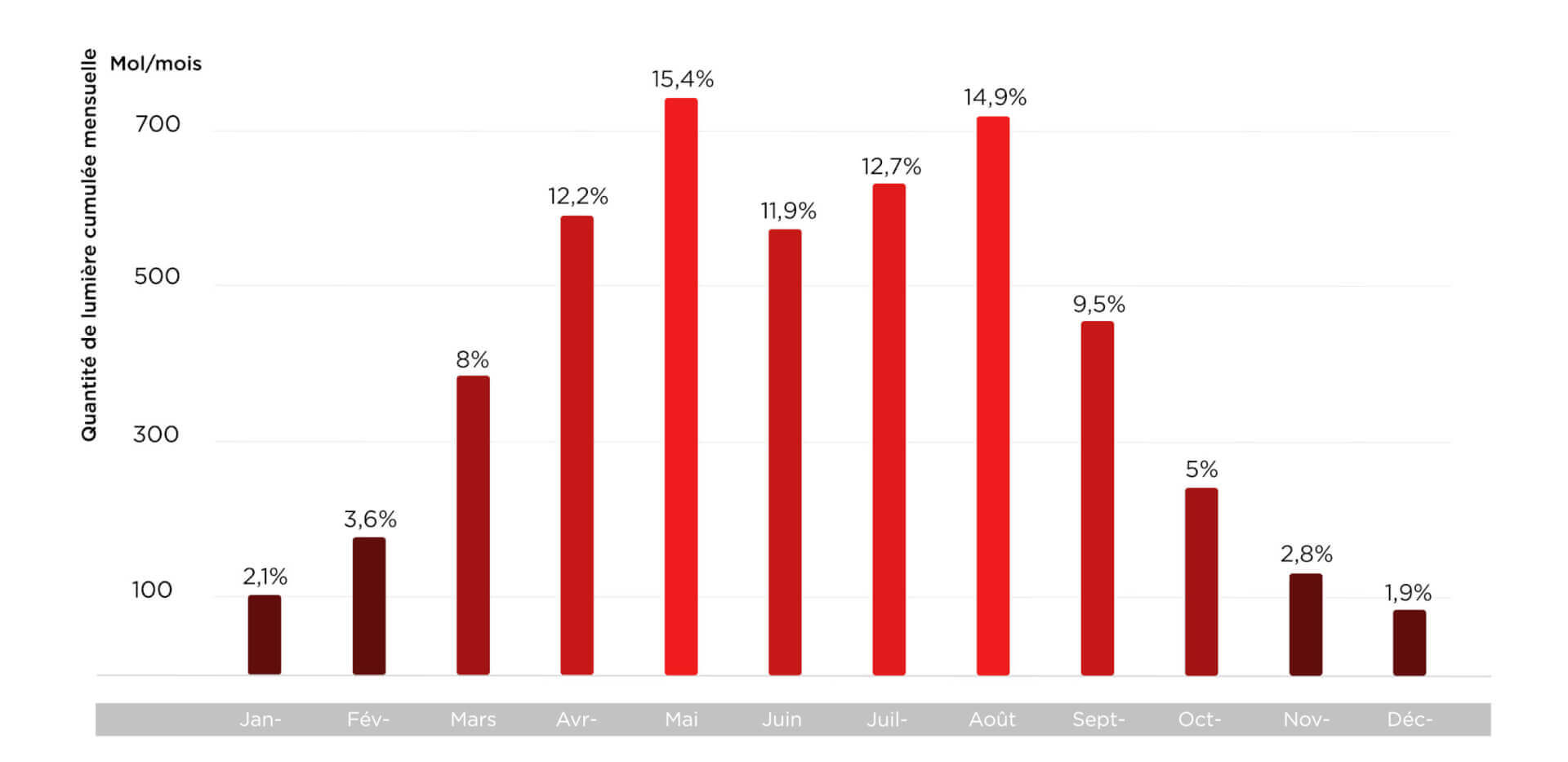
Light variations perceived by plants (2/3).
Plants have evolved under the sun for thousands of years.
14 November 2023
Plants have evolved under the sun for over thousands of years. They have developed numerous mechanisms to thrive under this light, which is both comprehensive, powerful and constantly changing. Studying the solar spectrum helps us understand how plants react to different light spectra, enabling us to enhance efficiency in artificial light supplementation.
The spectrum of sunlight perceived on earth changes throughout the day and over the course of the year. Factors such as the atmosphere, weather and seasons all contribute to the variation in light experienced by plants.
The atmosphere as an optical filter.
It is essential to distinguish between the spectrum emitted by the sun and the spectrum received on earth. In between, the atmosphere acts as a changing optical filter. Overall, 70 to 75% of the power carried by solar radiation reaches the earth’s surface.
There are three interactions between solar radiation and the atmosphere:
Atmosphere
Reflection
Wavelengths are reflected. Reflection can occur through the air, clouds or earth’s surface (the ground and water).
Absorption
Absorption decreases the intensity of light. It can be general, reducing overall intensity, or specific, decreasing the intensity of a particular wavelength.
Diffusion
Diffusion refers to the dispersion of light in all directions. However, the smaller the wavelength, the greater the diffusion. In fact, in earth’s atmosphere, blue light is scattered up to eight times more than red light. It is through the phenomenon of light diffusion that our sky appears bright during the day.
At sunset and sunrise, sunlight must travel a greater distance through the atmosphere than during the middle of the day. Diffusion is more significant and involves higher wavelengths.

However, observations can be deceptive: Indeed, although the sun appears more red when it is near the horizon, it is at this moment that the light we receive is the richest in blue!
At sunrise and sunset, direct light contains a majority of red, but its radiation is weak. Diffuse light, rich in blue, is more significant at this time of day.
Weather

Clouds
Long wavelengths (red) will be mainly diffused. Therefore, the spectrum will be more heavily blue.

Fog – humidity
Water droplets in the atmosphere scatter blue, green and red almost equally, resulting in white light. That’s why fog and clouds appear white to us.
Seasons
Sunlight duration and irradiance vary throughout the year, leading to a distortion of the light spectrum based on seasons.
Why? Seasonal changes are caused by two phenomena. First, earth’s movement around the sun. Second, earth’s tilted axis of rotation. The planet consistently leans in the same direction in its orbit around the sun. This means that at different times of the year, different parts of the planet are tilted toward the sun. This is also why seasons vary across different regions of the globe.

The graph below shows the monthly cumulative amount of light in Côtes-d’Armor in 2020. It demonstrates that the light delivered to plants does not follow a linear curve throughout the seasons.

Data collected by RED Horticulture in Côtes-d’Armor for the year 2020.
The RED LED lighting system serves as a supplement to natural light. It smoothens the light intensity received by the plant to ensure good yield, even during less sunny months.
In the next and final article, we will focus on natural light in greenhouses. We will examine the impacts of the structural material on solar radiation inside the greenhouse.

